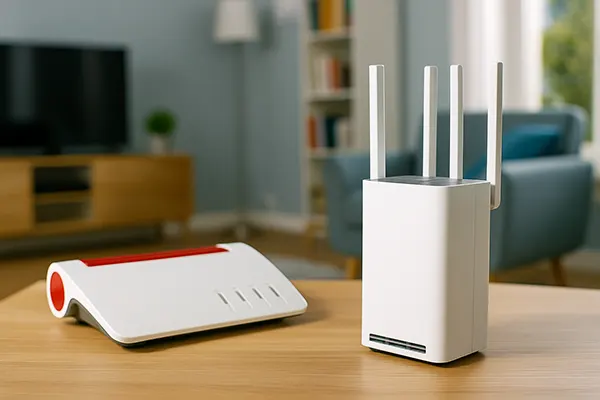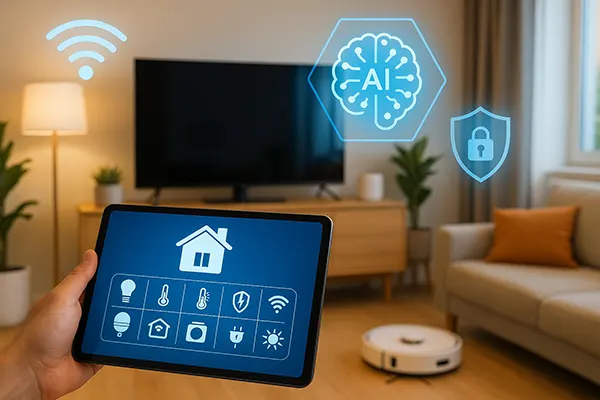
AI Routers in 2025: How Fritz!Box and TP-Link Models Redefine Home Connectivity
The era of smart homes has entered a new chapter, with AI-powered routers now playing a central role in redefining domestic connectivity. Gone are the days when a router simply distributed internet traffic. Today’s AI routers—like the latest Fritz!Box and TP-Link AI Series models—are actively managing, optimising, and securing your entire home network without constant manual input. In this article, we delve into how artificial intelligence transforms home networks and offer a detailed overview of the most advanced AI routers currently available.
Intelligent Network Management: What AI Routers Can Do
AI routers bring a proactive approach to network management, learning user habits and adapting to deliver optimal bandwidth distribution. This is especially valuable in multi-device households where smart TVs, gaming consoles, phones, and IoT devices demand simultaneous high-speed access. The AI system learns peak usage times and prioritises critical tasks, such as video conferencing or online classes, ensuring uninterrupted performance.
Modern AI routers go beyond load balancing. They detect and resolve potential connectivity issues in real time. If a device is struggling to maintain a stable connection, the AI can reassign it to a better channel or frequency band, reducing latency and dropouts. Additionally, AI can suggest network improvements through apps or dashboards tailored to everyday users, eliminating the need for deep technical knowledge.
Security is another area where AI shines. Routers now offer intelligent threat detection, blocking suspicious devices, IP addresses, or malware before they reach the local network. AI algorithms are regularly updated to recognise emerging threats, significantly enhancing the safety of personal data and connected devices within the home.
TP-Link AI Series: HomeShield and Adaptive Routing
TP-Link’s AI-driven routers, such as those in the Deco X and Archer AX series, integrate HomeShield—a suite of advanced security and performance features. These routers offer adaptive routing based on device behaviour and usage, automatically shifting traffic to the best paths across dual- or tri-band networks. This significantly reduces congestion and enhances responsiveness for high-demand applications like gaming and 4K streaming.
HomeShield also includes parental controls and device-specific rules. Parents can pause the internet, restrict content categories, and track online time per device, all with real-time reporting. This level of personalisation is possible thanks to continuous learning algorithms embedded within the router’s firmware.
Another standout is TP-Link’s collaboration with Amazon Alexa and Google Assistant, enabling voice-driven network adjustments. This feature is particularly helpful for less tech-savvy users who need quick fixes or want to manage guest access without opening apps.
Fritz!Box Models: German Engineering Meets AI Power
AVM’s latest Fritz!Box models, including the 7690 and 6670 Cable, bring German precision into the AI networking space. Known for their stability and firmware flexibility, these routers now incorporate AI features to manage wireless environments more dynamically. The routers identify interference sources and recommend placement or configuration adjustments based on real-time analytics.
Fritz!Box also boasts an AI-assisted Mesh system. It automatically decides the best node connections within a home to ensure seamless roaming between rooms without losing signal strength. For homes with thick walls or multiple floors, this creates a unified and powerful Wi-Fi experience.
Security in Fritz!Box routers is also enhanced through intelligent scanning. Suspicious activity prompts alerts and automatic firewall adjustments. These routers maintain regular firmware updates to stay compliant with GDPR and international data protection protocols, making them a reliable choice for privacy-conscious users.
Built-in Telephony and Home Automation Integration
One of Fritz!Box’s unique advantages is its integration with DECT telephony and smart home controls. The AI system supports seamless voice prioritisation, ensuring landline and VoIP calls are crystal clear even during heavy network traffic. It also learns typical calling patterns to reserve bandwidth dynamically.
In the realm of home automation, Fritz!Box routers connect with thermostats, switches, and motion sensors. The AI learns user routines to adjust lighting or temperature, contributing to energy efficiency and comfort. This transforms the router from a mere internet hub into a central brain of the household.
Furthermore, AVM’s MyFRITZ! app provides remote access to all devices and files connected to the home network. AI predicts user needs and suggests shortcuts or automated rules, adding convenience without compromising security.

AI Routers and the Future of Home Connectivity
Looking ahead, the AI router market is projected to grow significantly, driven by the adoption of Wi-Fi 7 and the expansion of smart homes. Future routers will likely leverage edge computing to process data locally, reducing response times and enhancing customisation capabilities. This will enable AI to adapt to even more complex usage environments and user behaviours.
Another development to watch is the integration of AI routers with cloud-based services for advanced diagnostics and remote maintenance. Brands like TP-Link and AVM are already exploring these functions, which would allow ISPs and users to solve issues proactively before they affect performance.
These routers are also expected to play a key role in energy optimisation. With rising electricity costs and environmental concerns, AI can analyse usage patterns and optimise device connectivity schedules, reducing power consumption across smart homes.
The Role of AI in Enhancing Accessibility
AI-driven routers are becoming more inclusive by offering multilingual support, voice commands, and intuitive app interfaces. This ensures that users of all ages and backgrounds can access and configure their networks without frustration.
Moreover, AI adapts network settings based on the user’s digital habits. Seniors who primarily use video calls or online TV services receive optimised settings, while gamers or remote workers experience prioritised performance tailored to their needs.
Lastly, manufacturers are investing in AI that can identify accessibility challenges—such as hearing or vision impairments—and adjust notification methods or interfaces accordingly. This trend reflects a broader movement towards user-centric, equitable technology design.



